1
On May 28, 1914, the sailors cast off at 4:27 p.m. On board the passenger ship preparing to make its 192nd Atlantic crossing, there were 1,477 people. Captain Henry George Kendall was on his first voyage at the helm of the Empress of Ireland leaving Québec.As for all ships greater than 30 metres in length, navigation on the river had to be done with a pilot assisting the captain. The presence of many islands on this course, the low depth of certain channels, the frequent currents and the great amplitude of the tides demanded constant attention. As he had done for 8 years, pilot Adélard Bernier would guide the liner through the 157 nautical miles between Québec and Pointe-au-Père.
For this six-day journey, 420 crew members and 1,057 passengers were in place:
In first class: 87 people out of a capacity of 310;
In second class: 253 people out of a capacity of 468;
In third class: 717 people out of a capacity of 758,
including just over 200 former employees of Detroit auto factories.
Starting at 5:30 in the afternoon, the bugle sounded on the decks to call third class passengers to dinner. Those in second and first class were called at 7:00 pm. On the ship, close to 5,000 meals were prepared each day. More than one hundred people worked in an immense kitchen divided into several sections: baking, pastries, meat, etc. There were different meals and menus for the different classes of passenger and for officers and for sailors.
The passengers included a contingent of 171 Salvation Army members making the trip to London to attend the movement's third international conference. About forty of these Salvationists were part of the marching band. Being acquainted with each other, they all created a festive atmosphere throughout the evening. They walked on the decks to talk and gathered in the music rooms to sing or play the piano. Some of the passengers took advantage of the evening to write a last latter to be posted during the stop in Rimouski. At about 11:00 p.m., most retired to their cabins for their first night on board.
Each time the R.M.S. Empress of Ireland passed Rimouski, it stopped for the transhipment of mail that had reached the port by train. A postal ship, the Lady Evelyn, ensured the connection between the train and the Empress of Ireland. At about 1:00 a.m. on the night of May 29, the mail for Europe was loaded and a few sacks were unloaded for North America. These bags contained letters and postcards posted on board the Empress of Ireland by passengers since the departure from Québec.
At 1:20 a.m., the Empress of Ireland unloaded pilot Adélard Bernier on the pilot ship Eureka posted at the Pointe-au-Père station. Immediately, Captain Kendall headed offshore.
2
Launching exercise for rescue boats at the Québec dock1906-1914
Empress of Ireland
 Credits:
Credits:Canadian Pacific Archives
3
After the sinking of the Titanic in April 1912, the number of lifeboats on board the Empress of Ireland grew from 16 to 42. In Québec, on the morning of May 28, 1914, as before every passenger liner departure, the lifeboat launching exercises, fire drills and watertight door closing drills were executed in under three minutes.The launching of each lifeboat took ten crew members. For the daily closing drill for the 24 watertight doors, one crew member was assigned per door and each one ran to his post as soon as the alarm sounded.
4
Path taken by the Empress of Ireland before its collision with the coal freighter, the StorstadJune 1914
St. Lawrence River
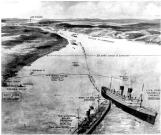 Credits:
Credits:The Sphere
5
At about 1:40 a.m., the lookout on the Empress of Ireland rang a bell to signal the presence of a white light on the star bow, about 6 nautical miles away. This was the coal ship Storstad which was headed to the Pointe-au-Père pilot station to take its pilot on board; a minute later, it disappeared in a heavy fog. At 1:42 a.m., the Empress of Ireland in turn was enveloped in fog.6
At 1:55 a.m., sailors on the passenger liner saw the coal ship emerge from the fog.29 May 1914
About 11 km northeast of the Pointe-au-Père lighthouse
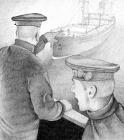 Credits:
Credits:Illustration: Jean-Pierre Vallée
Adaptation of witness testimonies: Denis Leblond
Narration: Louis Amyot
Merlin Films
7
Sailors on the Empress of Ireland saw the prow of the Storstad about a hundred metres away, emerging from the fog and headed straight for them. The collision was inevitable. Several passengers heard a muffled sound and felt an impact, making some of them believe the ship was docking.8
At 1:56 a.m., the coal ship Storstad rammed the passenger liner amidships29 May 1914
About 11 km northeast of the Pointe-au-Père lighthouse
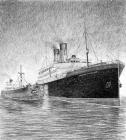 Credits:
Credits:Illustration: Jean-Pierre Vallée
Adaptation of witness testimonies: Denis Leblond
Narration: Louis Amyot
9
The immense hole created by the Storstad, about 4 metres wide by 14 metres high, allowed a great quantity of water to enter several decks at once.The Empress of Ireland listed very quickly on its starboard side.10
At 1:57 a.m., the boiler rooms were flooded.29 May 1914
Empress of Ireland
 Credits:
Credits:Illustration: Jean-Pierre Vallée
Adaptation of witness testimonies: Denis Leblond
Narration: Louis Amyot
11
The Storstad penetrated the Empress of Ireland so deeply that it damaged the watertight bulkhead separating the two immense boiler rooms. These rooms were flooded in under 2 minutes; about 270,000 litres of water per second rushed in. The boiler fires were extinguished, causing the pressure in the boilers to drop, and the ship lost its ability to maneuver.12
At 1:58 a.m., at the sound of the alarm, the crew tried to close the watertight doors.29 May 1914
Empress of Ireland
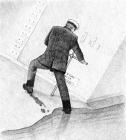 Credits:
Credits:Illustration: Jean-Pierre Vallée
Adaptation of witness testimonies: Denis Leblond
Narration: Louis Amyot
13
As soon as the alarm sounded, all crew members assigned to the manual closing of the watertight doors rushed to their posts. Water had already flooded several corridors and the listing of the ship prevented the sailors from activating the closing mechanisms on the starboard doors.14
At 1:59 a.m., with great difficulty, some lifeboats were launched.29 May 1914
Empress of Ireland
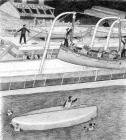 Credits:
Credits:Illustration: Jean-Pierre Vallée
Adaptation of witness testimonies: Denis Leblond
Narration: Louis Amyot